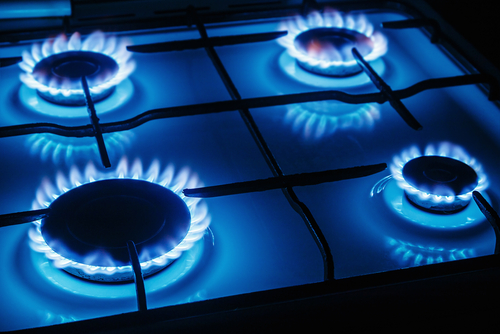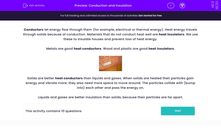Heat energy will always flow from hot to cold. In other words, if a hot object is placed next to a cold one, it will start to transfer its energy to the cold one. This makes the hot object cool down and the cold object heat up. It will continue to do this until both objects reach the same temperature.
Conductors let energy flow through them (for example, electrical or thermal energy). Heat energy travels through solids because of conduction. Materials that do not conduct heat well are heat insulators. We use these to insulate houses and prevent loss of heat energy.
Metals are good heat conductors. They allow heat to flow very easily and therefore become hot very quickly.

Ovens and grills (as well as the pots and pans used for cooking) contain lots of metal so that the heat from the oven can cook food quickly.
Wood and plastic are good heat insulators. They prevent heat from flowing easily, in order to keep objects at a certain temperature. In general, all non-metals are insulators.

The inside of a loft may be insulated with a material that will prevent the heat from flowing out from the top of the house. This 'traps' the heat and keeps the house warm.
Solids are better heat conductors than liquids and gases. When solids are heated their particles gain energy and vibrate more; they also need more space to move around. The particles collide with (bump into) each other and pass the energy on. Liquids and gases are better insulators than solids, because their particles are far apart.








